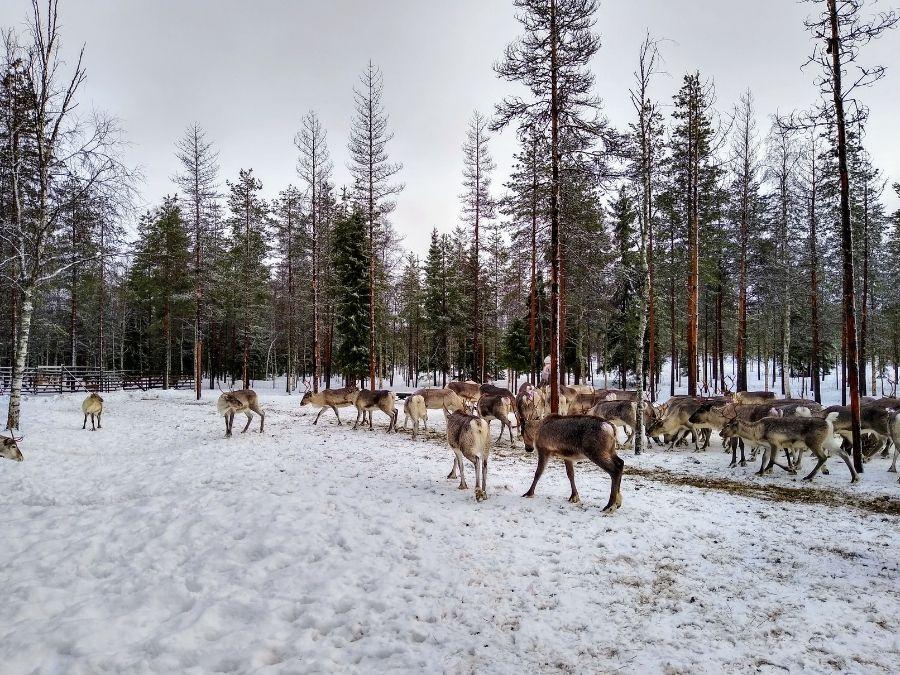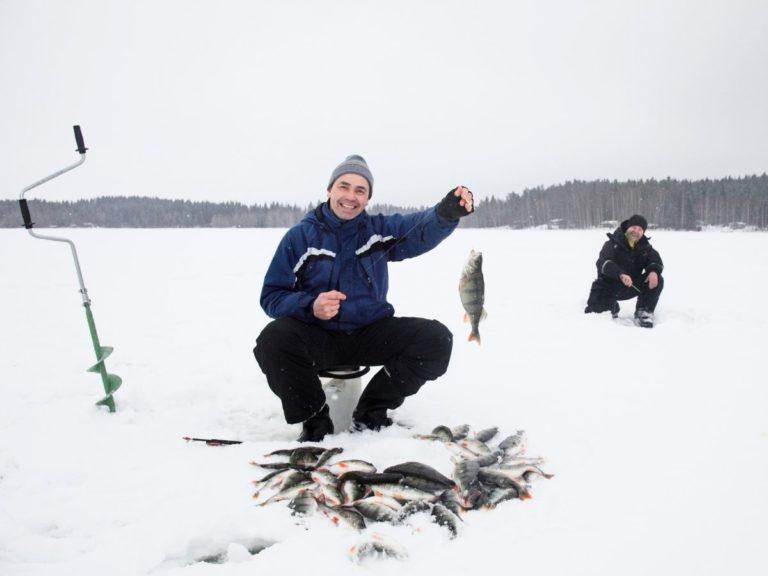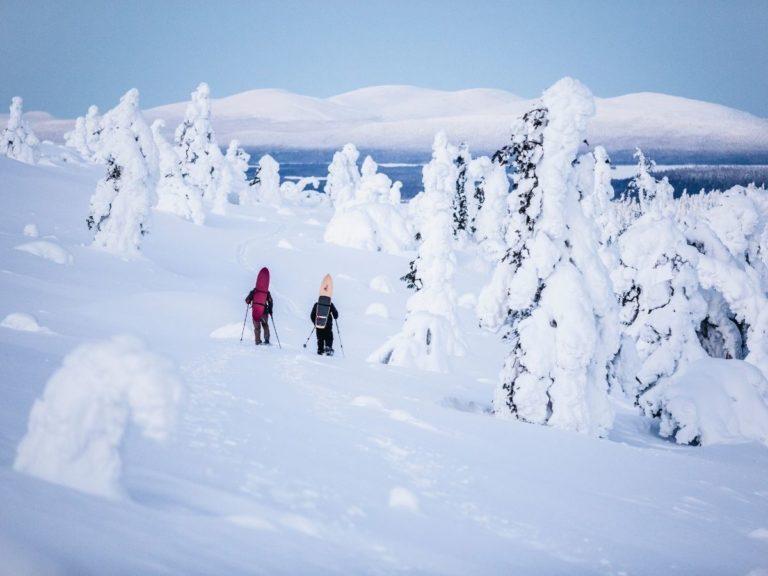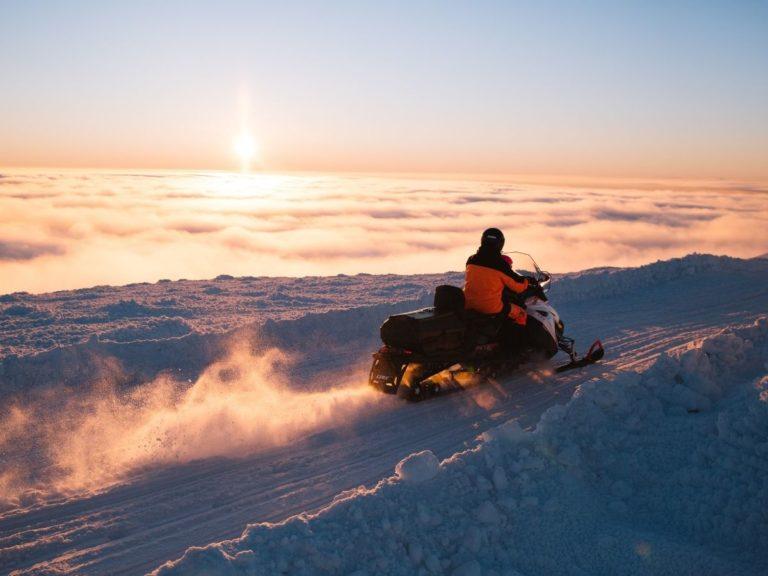Charasterics of reindeer
Reindeer belongs to the family of deers and it could be characterized as a semi-domestic animal that resembles a mountain deer in its original way of life and body structure. The hirvas, ie male, is about 110 cm high at the withers and weighs about 90 to 180 kilograms. The size of the vaadin, ie the female, is slightly smaller, as its height at the withers is usually about 90 cm and the weight requirement is 60 to 100 pounds.
Although they are known primarily as grayish-white, the color actually varies from almost black to pure white. There are also dozens of color-related designations. For example, a dark individual is called musikki, light white is suivakko and white individual is valkko.
Long-legged and larger reindeer are found mainly in Kainuu, close to the deer residential areas. The difference with Lapland’s species is probably due to the fact that they have been able to inbreed wit wild deer, whereby some the genetics have been able to mix.
In numbers:
Length from tail to muzzle 150-210 cm
Tail length 10-15 cm
Ear size 9-12 cm
Front leg length 55-56 cm
The lifespan of the female is about 18 to 20 years. Buck, on the other hand, live in the wild for more than 10 years.
A newborn calf usually weighs about 4 to 6 kilos.
The antlers
Both the male and female grow annually renewing antlers, which the males drop after the autumn mating season, and females in the spring after the calving. Reindeer is also the only deer animal in Finland, in which the female also grows antlers. Antlerless individuals (especially bucks) are called nulppo.
The antler is the fastest growing bone in the world: during the busiest growing season, summer, the horns grow up to 2 cm per day.
Antlers also have a social significance inside a tokka (herd). If a reindeer loses its antlers in an accident or they are cut off by humans, the position of the individual in the group deteriorates. Antlers are also used in mutual settlements, especially during mating season, when bucks fight with each other for the attention of the females. The antlers are not used against beasts, but instead reindeers try to defend themselves by kicking.
Reindeer fur is an excellent insulator
Like the mountain deer, the reindeer is very well adapted to the Arctic conditions of the North. In Lapland, the temperature between summer heat and winter frosts can be as high as 70 degrees Celsius, while in Russian Siberia, these animals are accustomed to living even in conditions where the frost can be as high as 70 degrees during the winter, while in summer the heat can raise up to 40 degrees.
The reindeer’s main means of survival against large temperature fluctuations and different weather conditions is its excellent insulating fur. The winter fur is really dense and the air compartments in it make the fur both light and very insulating. An animal in normal condition can survive frosts of up to 50 degrees without the need to increase the efficiency of heat production.
The rigid cover hairs of the fur are thick in the middle and thinning towards the tip. There are very insulating air compartments inside the hair. An adult animal can grow as much as 1,700 hairs per square centimeter and the thickness of the coat is usually about 3-4 cm. In addition to the thick cover hairs, the fur has undercoats that prevent it from moving.
Reindeer skins are widely used in Lapland, for example, as bedding and seating pads, and they are also widely sold in various shops, where durable and properly treated skins are popular souvenirs. For example, when placed on a cellular plastic base, a reindeer skin provides a great insulating as well as a traditional base for a winter hiker or sleigh rider.
The herd animal thrives in "tokka"

Reindeer is a herd animal that thrives in a tokka, which mean a herd in Finnish language. One herd can have hundreds or even thousands of individuals. Tokka can wander hundreds of kilometers a day in search of food and water. Especially young adults or bucks may also roam by themselves at times.
As the animal moves, its beaks make an easily perceptible clicking sound, possibly intended to act as a means of communication that is consistent with the reed. However, this theory has not been formally studied.
Tokka is controlled by reindeer herders, depending on the time, with a suitable vehicle, such as an ATV or snowmobile. Trained dogs also continue to be an invaluable aid in guiding herds. In the past, herds were steered on foot as well as on skis.
Despite many beliefs, the herds are not allowed to run freely along forests and fells, but nature’s own pastures are sought to be used efficiently through recycling, where the herdsmen jointly share certain areas for the use of herds. This grazing cycle is strongly based on the animals’ own natural instincts. In spring, herds are often moved to good calving areas. In winter, the herds move to areas with as little snow as possible, where food is available as easily as possible.
The main food for reindeer is especially lichen, mushrooms, hay and herbaceous plants and the leaves of trees and shrubs. Herds’ locations vary a lot between the different times of the year. For much of this reason, herds can be seen in very different places between seasons.
Rutting season

Rykimä, aka the rutting season for reindeer, begins in late September and lasts until October-November. At the time of the mating, males, surround the required, females procreation in their minds.
The males are very jealous of their females and defend both them and their own position against other bucks. In this case, the antlers are clashing in the forests of Lapland, which has its own significance both in strengthening the male ‘s own position and also a certain kind of biological weapon, which is used to tune the hormonal action of the females.
The biggest and strongest reindeers are the winning parties in this battle and they get to bring their own genes to the widest distribution.
It is good for us people to take the mating season into account as well, because even though reindeer normally avoid people, the situation during rykimä is a little different. At the time of the mating, people should stay out of the way of bucks in particular, and especially not getting between the males and females. In the autumn, herds are worth circling as far as possible.
If you are the target or under a threat of an attack, you should try to get out of the situation as quickly as possible. If escape from the foot is not possible, you can try to seek protection by climbing on a tree or other structure, such as a cliff, for example.
It is always advisable to report intimidating bucks to the local grazing association, who know how to assess the situation and, if necessary, also address such a threat.
Even though reindeers might cause threatening situations in autumn, you should not be afraid of accessing the nature as long as you remind keep your distance to them.
Reindeer in the traffic
Although the reindeer is a sympathetic animal in every way, animals that roam freely and in large numbers also pose their own danger in traffic as well. The most dangerous time for traffic accidents is the dark season of autumn, when, according to Liikenneturva, there might be 20 traffic accidents per day. In total, a maximum of almost 4,000 reindeer crashes occur in Finland every year.
However, it is possible to reduce the possibility of a collision through one’s own actions. When leaving for traffic, it is advisable to book enough time to reach the destination on time by driving in accordance with the prevailing speed limits. With regard to driving speed, it is also worth considering that the speed at which the car remains under control even in unexpected situations is driven. Namely, reindeer can surprise a motorist, for example, from behind bends, from the ditches, and from a dense forest.
If you see a reindeer crossing a road, it is worth slowing down, as herds of animals moving in the tokka are usually accompanied by several individuals.
In traffic, it is advisable to use high beams already in the dim to facilitate detection. Reindeer may also have reflectors to make them easier to detect. If you have spotted an animal on the road, oncoming motorists can be warned of the danger ahead by flashing long lights.
Learn about reindeer husbandry in Ranua
In Ranua, you can get acquainted with husbandry and the daily life of a reindeer farm at the Vaaran Porotila, located near the center of the village. Guided farm tours are organized both during summer and autumn, as well as in winter.
Sources and about the subject elsewhere: Paliskunnat | Rutting season – be careful Ranua Zoo | Reindeer Lapland.fi | Year of the reindeer








